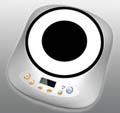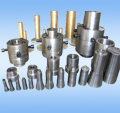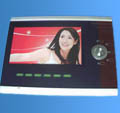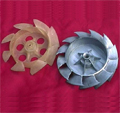

| Address: | PDS Enterprise Inc. 1650 West Artesia Blvd, Suite 278 Gardena, CA90248 |
| Phone: | 1-843-408-0142 |
| Email: | pdsenterprise@gmail.com sales@coolprototyping.com |


Home>Popular Page
34. What is rapid prototyping?
Rapid prototyping is the automatic construction of physical objects with 3D printers, SLA machines or selective laser sintering systems. Rapid prototyping is a type of computer-aided manufacturing (CAM) technology and is one of the components of rapid production tooling.
There are two main methods of rapid prototyping, which are derived from similar approaches in sculpture. In additive prototyping, the machine reads in data from a CAD drawing, and lays down successive micrometer or millimeter-thick layers of liquid plastic, powdered plastic or some other engineering material, and in this way builds up the model from a long series of cross sections. These layers which correspond to the virtual cross section from the cad model are glued together or fused (often using a laser) automatically to create the final shape. This is similar to the ancient technique of coil building a ceramic pot. The primary advantage to additive construction is its ability to create almost any geometry (excluding trapped negative volumes). One drawback is that these machines make smallish parts, typically smaller than an engine block. Monumental parts can be made by automatically carving foam with a hot wire one layer at a time. Several companies have built large scale machines to do this automatically, but most market the product rather than the machine.
The subtractive method is older and less efficient. In this technique the machine starts out with a block of plastic or wax and uses a delicate cutting tool to carve away material, layer by layer to match the digital object. This is similar to a computer numerical control (CNC) device such as a lathe or a mill. The subtractive method is older and tried and true. It is similar in concept to a sculptor carving a block of marble or wood where they chip away at the surface of the model until the form of the project begins to emerge. Complex shapes and forms with undercuts are more difficult to accomplish with the subtractive method. Typically these are made in parts and fit together. Subtractive technologies are capable of doing large scale projects.
The standard interface between CAD software and rapid prototyping machines is the STL file format.
Advances in technology allow the machine to use multiple materials in the construction of objects. This is important because it can use one material with a high melting point for the finished product, and another material with a low melting point as filler, to separate individual moving parts within the model. After the model is completed, it is heated to the point where the undesired material melts away, and what is left is a functional plastic machine. Although traditional injection molding is still cheaper for manufacturing plastic products, soon rapid prototyping may be used to produce finished goods in a single step.
Other advances may include machines that are both additive and subtractive. Some consider the lamination technologies (laminated object manufacture) to already be dual strategy machines.
However, there are currently several schemes to improve rapid prototyper technology to the stage where a prototyper can manufacture its own component parts. The idea behind this is that a new machine could be assembled relatively cheaply from raw materials by the owner of an existing one. Such crude 'self-replication' techniques could considerably reduce the cost of prototyping machines in the future, and hence any objects they are capable of manufacturing.
 We are constantly looking for new products in order to grow our business and Invention Home has enabled us to streamline that process much more quickly.
We are constantly looking for new products in order to grow our business and Invention Home has enabled us to streamline that process much more quickly. Marsha Dunmyre
CA, U.S.A
Cool Prototyping Copyright 2008-2009 © All Rights Reserved. Rapid Prototyping






